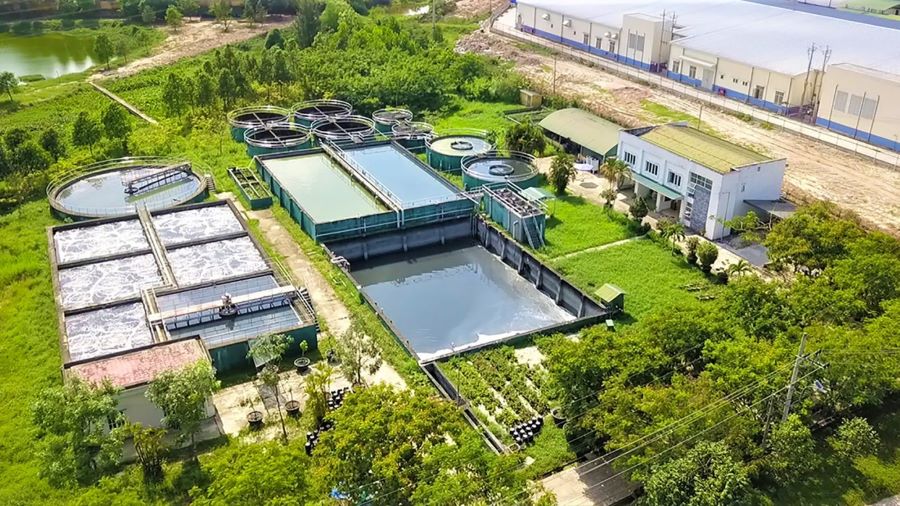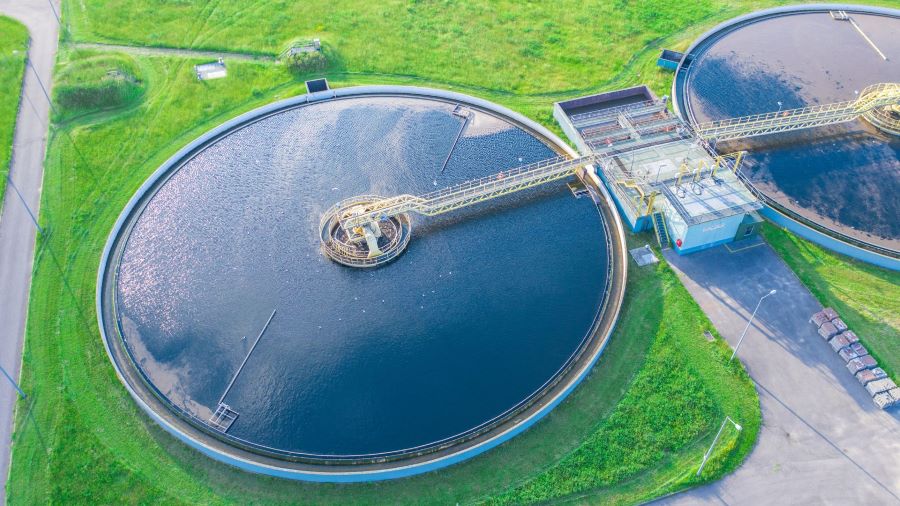Today, the development of green technology in wastewater treatment plays a vital role not only in environmental protection but also in improving quality of life. Green solutions such as aquatic plant systems, biofiltration using recycled materials, and constructed wetlands are becoming optimal choices for efficient and sustainable wastewater treatment. Let’s explore these solutions in detail with Đại Nam below.
1. What is Green Technology in Wastewater Treatment?
Green technology in wastewater treatment refers to modern solutions that minimize environmental impact, optimize treatment efficiency, and conserve natural resources. Instead of relying on energy-intensive and chemical-heavy methods, these systems utilize environmentally friendly processes that meet safety standards while limiting secondary pollution. Companies that adopt green technology not only fulfill their social responsibility but also reduce operational costs and build a sustainable brand image.
2. Why Green Technology is Essential for Wastewater Treatment
Water pollution is becoming increasingly serious, especially from factories, industrial zones, and urban wastewater, all of which contain hazardous substances and disease-causing microbes. Traditional treatment methods—like chemical or biological treatments—often fail to deliver long-term results and may even cause secondary pollution. Thus, green technology has emerged as a crucial solution to reduce environmental damage and offer sustainable alternatives.
By leveraging natural processes, green technologies help reuse resources and create a cleaner environment for future generations. This movement is not just a trend—it is a collective responsibility.

Modern wastewater treatment systems applying green technology are helping to protect water resources and the environment
3. Key Benefits of Green Wastewater Treatment Technologies
Green technology offers numerous outstanding benefits in wastewater treatment. One of the most significant advantages is its ability to protect the environment, reduce pollution, and conserve natural resources. Specifically, the key benefits include:
-
Environmental Protection: Natural processes eliminate toxins without harmful chemicals, protecting soil, water, and air.
-
Resource Reuse: Treated water can be reused, reducing demand on freshwater sources.
-
Cost-Effective Long-Term Operation: Lower operating costs and sustainable performance make these technologies more economical than traditional methods.
-
Public Health and Sustainability: Minimizing harmful bacteria, viruses, and chemicals protects community health and supports long-term development.
Wastewater treated with green technology meets clean water quality standards
4. Popular Green Wastewater Treatment Technologies
4.1. Phytoremediation Systems
These systems use aquatic plants like water hyacinth, reeds, and algae to absorb and break down pollutants. They are cost-effective, simple to implement, and enhance local biodiversity and landscape aesthetics.
4.2. Constructed Wetlands
This method filters wastewater using soil and wetland vegetation. Microorganisms and plants in the system naturally remove pollutants, contributing to ecosystem restoration and urban greening.
4.3. Algae-Based Treatment
Algae absorb nutrients and contaminants while producing oxygen and even biogas. These systems combine water purification with renewable energy generation.
4.4. Biofilters Using Recycled Materials
Inspired by MBBR (Moving Bed Biofilm Reactor) systems, this method uses recycled materials (e.g., sand, gravel, organic waste) to host biofilms that treat wastewater. It’s cost-effective, eco-friendly, and ideal for small- to medium-scale operations.
5. Challenges in Applying Green Technologies
Although green technologies offer numerous benefits, their development and application in wastewater treatment still face several challenges. One of the biggest hurdles is the high initial investment cost, especially for new and complex technologies. Businesses and organizations must allocate time and resources to research and implement these sustainable solutions.
In addition, maintaining the long-term effectiveness of green technologies is also a significant challenge. Environmental changes, climate conditions, and the evolution of microorganisms can all impact the performance of these systems. This requires continuous technological innovation to ensure consistent treatment efficiency.
Developing green technologies in wastewater treatment is a critical step toward environmental protection and sustainable development. Despite ongoing challenges, innovation and the adoption of advanced technologies offer hope for a cleaner and more sustainable future. Businesses, organizations, and communities must collaborate in adopting green solutions to secure a healthier living environment for future generations.
At Đại Nam, we focus on biological and resource-circulation solutions, integrating advanced technologies such as MBBR, bio-membrane filtration, and water reuse systems. Notably, the incorporation of recycled materials into bio-filtration systems helps reduce waste, cut costs, and enhance treatment efficiency—paving the way for more sustainable wastewater treatment practices.

